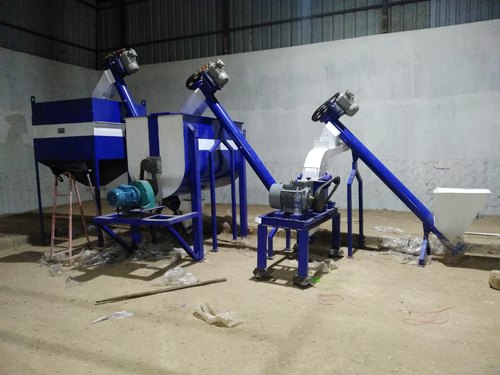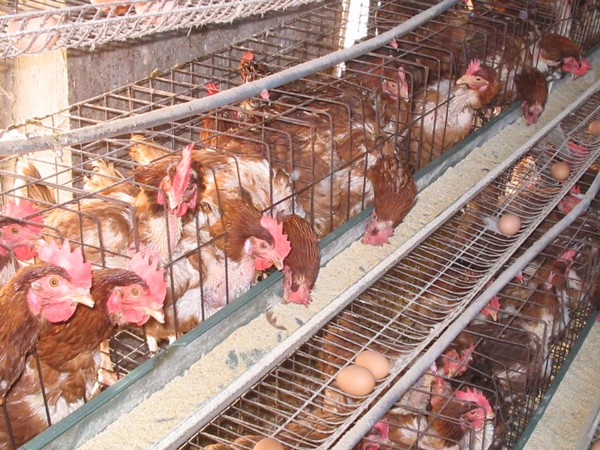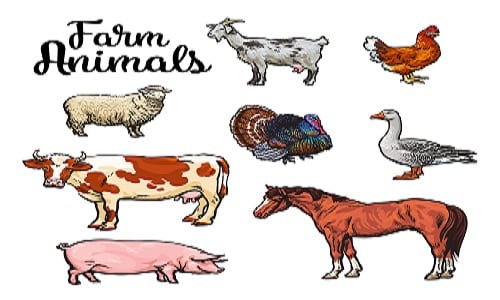Setting up a feed mill could be an overwhelming process, but with a proper guide and careful planning, the process could be easy. This guide will walk you through the basics of what you’ll need to get started and how to go about acquiring it.
With this guide, you’ll know everything you need to set up your feed mill and start producing feed for your animals.
What is Feed Milling?
Feed milling is the process of grinding and processing feed ingredients into a form that is suitable for animal consumption. The feed milling process can be divided into five main stages: raw material handling, grinding, mixing, pelleting, and cooling. Feed milling is a critical step in the production of animal feed, as it creates a uniform mixture that is easy for animals to digest.
What is a Feed Mill?
A feed mill is a facility that manufacture or produces animal feed. Feed mills are used to process grains and other raw ingredients, mix them together, and package them into bags or containers.
Also Read: Fermented Feed and Its Benefits to Chickens
How to Set Up a Feed mill
If you’re thinking about starting a feed mill, there are a few things you need to know. A feed mill is a factory that produces animal feed, usually from corn, wheat, and soybeans. It’s important to have a good understanding of the process and the equipment required to get started. The steps involved in setting up a commercial feed mill are:
Step 1: Draft a feed milling business plan
Having a business plan is extremely important before even starting your feed mill business. It is very unlikely that you will have all the information before you start, so you will need to make changes as you go along. So, if you are considering building a feed mill, you need to first draft a business plan. This is good practice as it will help you organize your thoughts, set goals and plan how you will achieve them. It will also help you show your investors how you will run your business and can help to secure funding.
You need to make sure that your business plan is well-written and that it covers all aspects of your feed mill. It should have details of your target customers, your products, your proposed pricing, your proposed marketing strategies, and other important details. The business plan should convince the relevant authorities that you can run a successful feed mill.
Step 2: Choose a location
The location you choose to site your feed mill, especially if it is for commercial purposes, is very important to its success and profitability. If you are building the feed mill for your farm, it is very easy and you don’t need to stress yourself choosing a location. Just find a good place on your farm that is not close to the pens, incinerator or farm house.
When choosing a commercial feed mill, don’t just choose any place to avoid wasting your hard-earned money. Some of the things to look out for when looking for a suitable location for your commercial feed mill include:
- Good and accessible roads, except you want to construct the road yourself.
- Proximity to areas with livestock farms available (poultry farms mostly preferred) or an industrial layout as specified by the government
- If possible, a location close to suppliers or sources of feed ingredients
- Proximity to agricultural engineers, fabricators and access to laborers
- Avoid flood areas or places with a poor water drainage system
- Secured location with a good security system in place
- Areas that allow heavy trucks, lorries and trailers to ply their roads
Please take note that it may be better to build your feed mill near the farmers rather than setting up in town and having to transport the feed all over. On the other hand, if you want to sell your feed to the city, it may be better to have your feed store in the city.
Step 3: Acquire the land
When you see a suitable location that meets most of the requirements listed above, make sure you find out the land you want to acquire has no ownership issues or any other legal issues. If there are none, you should proceed to pay for the land at the agreed price. If possible, buy as many acreages as you can afford to allow you to easily expand if necessary in the future, especially if you need more stores or warehouses.
Step 4: Get the required approval and licenses to operate a feed mill
In your country, there are likely to be quite a few regulations to follow before you can build a feed mill or start feed milling operations. One of the most important rules is to get approval from the relevant authorities and government ministries or departments. You will usually be required to have certain documents before your feed mill can be approved to operate.
Also Read: Nutritional Composition of Major Livestock Feed Ingredients
Step 5: Draw the feed mill architectural plans and have them approved
After you get approval from the relevant authorities, you can start drawing the architectural plans for your feed mill. These plans will be according to the regulations in your country, and you can get help from experts if you are not sure about the exact rules and regulations.
Even before your feed mill is built, a professional must be involved in drawing up the architectural plans. The plans will include the building of the feed mill, the machinery and equipment that will be installed, and the layout of the rooms and shops. However, it will be your responsibility to ensure that the approved plans are adhered to.
The following must be on the plan of a commercial feed mill:
- Administrative offices
- Milling machine areas
- Different stores for macro-ingredients and micro-ingredients
- Warehouse
- Cloakroom (changing room)
- Security post
- Vehicle parking lot
- Bathroom and toilet
Step 6: Hire a professional for constructing your feed mill
The building of the feed mill can be carried out by any qualified professional or a reputable construction company. They will work with you to ensure that the design, the layout and the materials used are exactly as you have specified. They will also be able to give you suggestions if you have not specified something.
Step 7: Purchase the machinery and equipment for the feed mill
Your feed mill will require some equipment. Without them, the business will not be able to function. You will need to purchase the machinery and equipment that will be used to manufacture the feed. You will also need to purchase the items required to operate the business such as computers, office equipment, and furniture. You must purchase only the best quality equipment and machinery.
The machinery is the lifeblood of the feed mill and you will need to purchase quality machinery that will be able to withstand the various loads that will be put on them.
Step 8: Install the machinery and equipment in the feed mill
Once you have purchased the machinery and equipment, you will need to install them in the feed mill. All of the time, the suppliers of the machines do the installations themselves as the installation fees are part of what you paid for. However, you might need to hire a qualified individual or expert to oversee the installations. They will have to make sure that the machines and equipment are installed properly, tested and that there is no damage to them.
Step 9: Hire feed mill workers and other personnel
You will need to hire and train feed mill workers. The workers will be responsible for the day-to-day operations of the business. To manage the feed mill, you will need to hire and train managers who will be responsible for the daily operations of the feed mill. You will also need to hire other workers who will be responsible for the administration and the maintenance of the machinery and equipment. You will also need to hire an animal nutritionist, security personnel, accountant, and sales and customer service representatives.
Step 10: Purchase the supplies and raw materials required for feed production
When the building is ready and the machinery installed, you should go ahead with buying all the necessary feed ingredients and store them in the warehouse. You can find a list of some feed ingredients via this link.
As a commercial feed miller, you should buy these ingredients in large quantities and ensure you have phone contacts and addresses of suppliers of these ingredients. Don’t rely on just one supplier. Have as many suppliers as possible and make sure their products are of high quality. You should take some portions of the ingredients to the lab to ascertain their nutritional compositions.
Other raw materials which you will require include vitamins and minerals, packaging materials and bags, and additives. It is important that you purchase these raw materials in bulk and store them in a safe place.
Step 11: Start feed production
After setting up everything including the purchase of the raw materials, you will need to start manufacturing the feeds. Begin by producing a small quantity of the feed to test its quality. You should have a livestock farm that would be used for tests of quality and performance. You can then begin scaling up the production of the feed depending on the results of the quality test.
Step 12: Start marketing the products
You can start marketing the feed you produce to the farmers. You may start by arranging for a meeting with the farmers in your locality to introduce them to your feed brand. You can also market the feed through other means such as public relations, print media, and the internet.
Step 13: Improve on the feed products
You will have to continuously look for ways to improve your product. At the same time, you will have to find ways to improve the production process and reduce production costs.
Feed Milling Machinery and Equipment
The following are the major machines and equipment in a feed mill.
- Grinder, crusher or hammermill
- Mixer
- Pelletizer
- Heat extractors
- Dust collectors
- Pallets
- Weighing scales
- Forklift
- Shovel
- Wheel barow
- Trolleys
- Toolbox
- Power generator
- Sack sealing machine
- Fire extinguishers
What are the challenges of the feed milling business?
The challenges of the feed milling include:
- Insufficient capital to run the feed mill.
- Poor electricity supply in some countries, hence more money is spent on alternative energy source like a diesel generator.
- Difficulty in getting raw materials when they are needed.
- Rising costs for raw materials such as corn and soybeans.
- Changing weather patterns that can affect crop yields.
- Poor quality ingredients that pose threat to brand image and reputation.
- Managing operations, optimizing production and quality control.
- Finding new sources for raw materials especially maize or corn.
- Maintaining good relationships with suppliers and customers amidst stiff competition from other feed mills.
- Due to the high capital requirements, most small farmers do not have the means to start a feed mill.
- Investing in a feed mill is equivalent to investing in a factory, where the farmer has to buy expensive machinery and invest a considerable amount in the research and development of the feed.
Also Read: What is Concentrate Feed & How to Mix?
What are the opportunities in the feed milling business?
Many people who are interested in starting a feed mill are concerned about the financial requirements. But don’t let this stop you! The feed milling business is one of the few agricultural industries that have yet to be disrupted by the rise of globalization and conglomerates, so there’s plenty of opportunity for entrepreneurs.
There is a growing focus on the nutritional value of the food animals consume. With this change, farmers’ need to feed better quality feed, like that produced by a feed mill, is increasing. As such, there is an increasing need for feed mills as farmers’ demand for quality feed is increasing. Since feed milling or production is no longer done by most farmers, there is a growing need for feed mills. Also, As the population of animals and the need for high-quality feed increases, there will be a growing demand for feed mills.
In addition, automation and technology are also important trends in the feed mill business. They allow for higher processing capacity, more efficient processing of more products per hour, and a higher consistency of quality.



